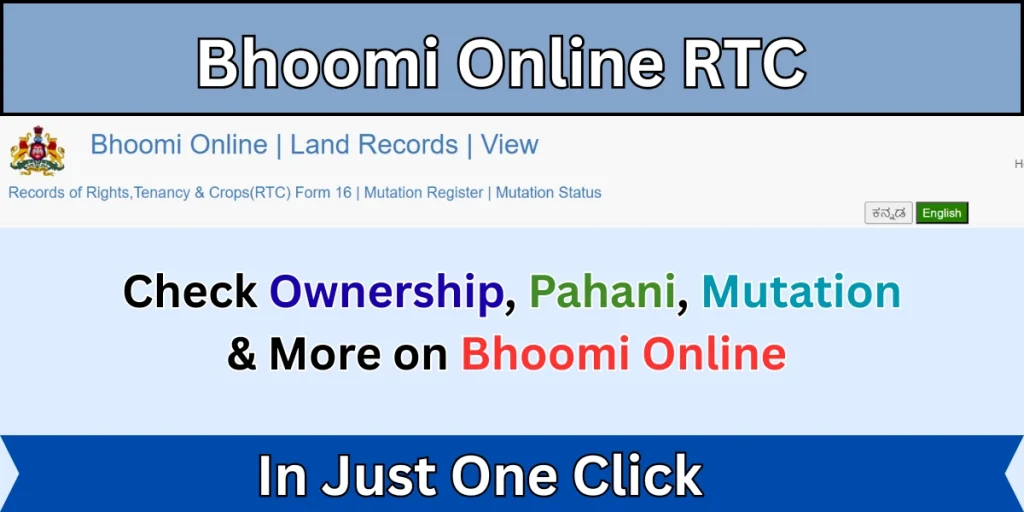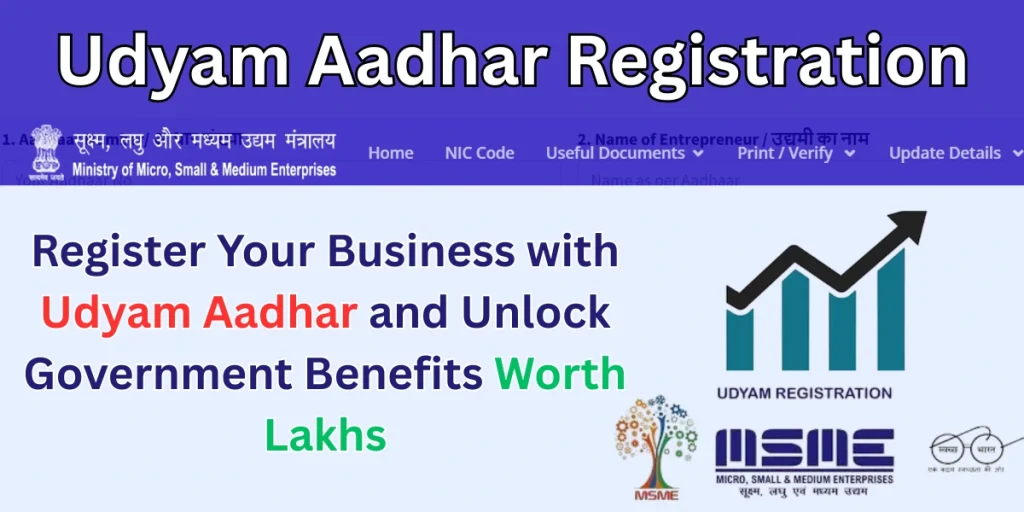Bhoomi Online RTC is a Government portal to access land records of Karnataka. The Bhoomi Online Portal is a game-changer for residents of Karnataka, providing easy access to land records, property details, revenue maps, and more. The portal is a part of the e-Governance initiatives launched by the state to simplify and digitise administrative processes.
Information Table for Bhoomi Online RTC
| Portal Name | Bhoomi Online |
| Official Website | bhoomi.karnataka.gov.in |
| Launched By | Government of Karnataka |
| Purpose | To provide online access to land records, revenue maps, and other property details to reduce paperwork and ensure transparency in land transactions. |
| Language Support | Supports Kannada and English |
| Available For | Landowners, prospective buyers, legal professionals, and anyone needing access to Karnataka land records |
| Document Download Options | Users can download Pahani, Record of Rights (ROR), and Revenue Maps directly from the portal. |
Objectives of RTC Bhoomi Online
- Digitize land records for easy public access.
- Ensure transparency in land transactions.
- Simplify access to records like Pahani, Mutation, and ROR.
- Minimize manual errors and improve efficiency.
- Empower citizens with self-service tools for land management.
- Support government schemes by integrating land data.
- Learn how the Yuva Nidhi Scheme can benefit you and explore its integration with land records through the Bhoomi Online Portal for a seamless experience.
Services Provided By RTC Bhoomi Online
- Access to RTC (Record of Rights, Tenancy & Crops): View and download land records with ownership, tenancy, and crop details.
- Dispute Resolution: Utilise land records to resolve ownership and boundary disputes.
- Certificate of Ownership: Obtain certificates confirming land ownership for legal or financial purposes.
- Pahani Records: Access land-related details, including ownership and crops grown on the property.
- Updated Land Records: Get access to the most current information on land ownership and revenue.
- Survey Number Details: View information on land boundaries and survey numbers.
- Revenue Maps: Download maps showing land boundaries and survey information.
- Ownership Verification: Verify land ownership and property titles.
- RTI Requests: File Right to Information applications for more land record details.
Bhoomi RTC Login
- Go to the official Bhoomi Online Portal
- Look for the “User Login” or “Registration” option on the homepage and Bhoomi Online login.
- Click on New Registration or Sign Up.
- Enter your Name, Email Address, Mobile Number, and Aadhaar Number.
- Choose the District for which you’re registering.
- Set a strong password for your account.
- Verify your details by entering the OTP sent to your mobile/email.
- Click Submit to complete the registration.
- Once registered, use your username/email and password to log in to the portal.
- After logging in, you can access rtc bhoomi online login and other land records.
- To access records, enter the survey number and village name to search for land details.
How To Access Bhoomi Online Land Records?
Step 1: Navigate to the official website of Bhoomi Online Karnataka
Step 2: Select your district from the list of Districts of Karnataka available on the homepage.
Step 3: Now, Select the Land Record Type:
- Records of Right
- Pahani
- Survey Number
- Revenue Map
Step 4: Now, enter all the required details such as survey number, Village Name, Taluka (Tehsil), Hobli (if applicable)
Step 5: After entering all the required details, click the search or submit button.
Step 6: Once the search results are displayed, you can view the Pahani, Record of Rights (ROR), or other details related to the land. You can also download or print the land record document for further use.
Steps To Get Pahani Records
Step 1: Navigate to the official website of Bhoomi Online Karnataka
Step 2: Select your district from the list of Districts of Karnataka available on the homepage.
Step 3: Now, Select the Land Record Type:
- Records of Right
- Pahani
- Survey Number
- Revenue Map
Step 4: Now, enter all the required details such as survey number, Village Name, Taluka (Tehsil), Hobli (if applicable)
Step 5: After entering all the required details, click the search or submit button.
Step 6: The system will display the Pahani for the land, showing the ownership, crop details, tenancy information, and other important land-related data.
How To Get a Mutation from Bhoomi Online?
- Visit the official Bhoomi Online Portal
- Select the district where the land is located.
- Choose Mutation Report or Mutation Details from the available options.
- Enter details such as Survey Number, Village Name, Taluka, and Hobli (if applicable).
- Click Search to retrieve the mutation report.
- View the mutation details, including changes in ownership and other relevant information.
- Download the report in PDF format or print it for future reference.
How To Check Revenue Maps on the Bhoomi RTC Portal?
- Visit the official Bhoomi Portal
- Select the district where the land is located.
- Look for the option to view Revenue Maps or Survey Maps.
- Enter the required details such as:
- Survey Number
- Village Name
- Taluka (Tehsil)
- Hobli
- Click on Search to retrieve the map.
- The portal will display the Revenue Map, showing land boundaries, survey numbers, and related land data.
- You can download or print the map if needed.
FAQs
To check the mutation status, go to the Bhoomi Portal, select the mutation status option, and enter the survey number, village name, and other relevant details.
No, registration is not required to view land records like Pahani or ROR. However, registration is needed for certain features or services.
Yes, the Record of Rights (ROR) available on the Bhoomi Portal verifies the legal ownership of land.


